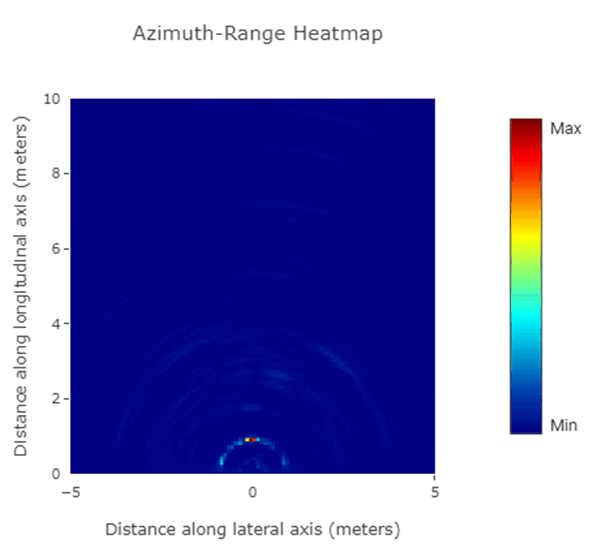SWRU529C May 2017 – April 2020
-
mmWave Demo Visualizer
- Trademarks
- 1 Setup Instructions
- 2
CONFIGURE Tab
- 2.1 Platform
- 2.2 SDK Version
- 2.3 Antenna Config (Azimuth Resolution - Degrees)
- 2.4 Desirable Configuration
- 2.5 Frequency Band (GHz)
- 2.6 Scene Selection – Best Range Resolution
- 2.7 Scene Selection – Best Velocity Resolution
- 2.8 Scene Selection – Best Range
- 2.9 Plot Selection
- 2.10 User Selected Configuration
- 3 PLOTS Tab
- 4 Advanced Options
- 5 Troubleshooting
- 6 Customizing the mmWave Demo Visualizer
- 7 Offline Version of the Visualizer
- Revision History
3.6 Range-Azimuth Heatmap
This plot displays the radar cube matrix for zero Doppler only but across all range bins and all antennas (see Figure 14). For the advanced frame, this plot shows the heatmap for the first subframe, which has this plot enabled in the guiMonitor command (the plot title reflects this subframe number). When the range bias is supplied using the compRangeBiasAndRxChanPhase command, the GUI internally uses the range bias to correct the range in meters, as calculated from rangeIdx, shipped by the mmWave device.
NOTE
Select Range Azimuth Heat Map in the Configure tab and configure the device accordingly to view this plot.
 Figure 14. Azimuth-Range Heatmap (Example)
Figure 14. Azimuth-Range Heatmap (Example)